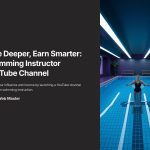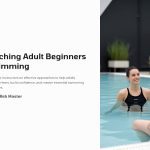 Teaching swimming to adult beginners is a rewarding yet challenging task. Unlike children, adults often come with fears, physical limitations, or mental barriers that can slow their progress. However, with the right approach, patience, and structured lessons, instructors can help adult learners gain confidence and master essential swimming techniques effectively.
Teaching swimming to adult beginners is a rewarding yet challenging task. Unlike children, adults often come with fears, physical limitations, or mental barriers that can slow their progress. However, with the right approach, patience, and structured lessons, instructors can help adult learners gain confidence and master essential swimming techniques effectively.
Adult beginners typically progress faster when lessons are personalized to their comfort levels and include gradual skill development. The key is to create a supportive learning environment, focusing on overcoming fear, building water confidence, and using simple drills to develop foundational techniques. This guide explores the best teaching strategies for adult beginners, ensuring they enjoy the process and see noticeable improvements.

Understanding Adult Beginner Mindset
Adults learning to swim often experience anxiety, fear of drowning, or embarrassment about their skills. Unlike children, they may also have physical limitations such as reduced flexibility, weaker buoyancy, or muscle tension due to stress. Understanding these psychological and physical barriers is crucial for an instructor to tailor lessons appropriately.
To create a positive learning experience:
- Start with discussions about their fears and past experiences with water.
- Use encouragement and positive reinforcement to build confidence.
- Introduce basic water safety knowledge before starting swimming techniques.
- Focus on breathing techniques to reduce anxiety and help them relax.
By addressing these concerns, instructors can foster a safe and trusting learning environment where adult beginners feel more comfortable progressing at their own pace.

Building Water Confidence Before Teaching Techniques
One of the biggest hurdles for adult beginners is overcoming fear and developing water confidence. Instructors should dedicate the first few lessons to water acclimatization before introducing stroke techniques.
Effective strategies include:
- Encouraging simple water exercises such as walking in shallow water and splashing.
- Teaching floating techniques, including back floating and starfish float.
- Practicing breath control by blowing bubbles and submerging the face gradually.
- Using kickboards or flotation devices to help beginners feel secure.
Once students feel comfortable in the water, they will be more receptive to learning stroke techniques.

Step-by-Step Breakdown of Basic Strokes
Teaching adult beginners requires a structured approach, breaking down each swimming stroke into simple, manageable steps. Start with the easiest strokes and gradually introduce more complex techniques.
Freestyle
- Practice body position and floating.
- Introduce flutter kicks while holding onto the pool edge.
- Teach arm movements separately using drills.
- Combine breathing techniques with arm strokes.
Backstroke
- Start with floating on the back.
- Teach simple back kicks while holding onto a wall.
- Introduce arm movements, emphasizing smooth transitions.
Breaststroke
- Begin with leg movements (frog kick) using a board.
- Add arm strokes separately before integrating them with the kick.
- Focus on timing and breathing coordination.
By using step-by-step progression, students can develop strong foundational skills before moving on to advanced techniques.

Overcoming Common Struggles for Adult Beginners
Adult beginners often face specific challenges that require patience and targeted exercises. Common issues include:
- Fear of Water: Encourage gradual immersion and breathing exercises.
- Lack of Coordination: Use slow-motion drills to break down movements.
- Poor Buoyancy: Teach proper body positioning and floating techniques.
- Difficulty Breathing: Focus on exhaling underwater and relaxed breathing.
Each student progresses at a different pace, so instructors should adjust lessons based on individual needs and comfort levels.

Effective Use of Swimming Aids and Drills
Swimming aids such as kickboards, pull buoys, and fins can help adult beginners build confidence and improve technique. However, these tools should be used strategically:
- Kickboards assist in strengthening leg movements and improving balance.
- Pull buoys help students focus on upper body strokes.
- Fins provide additional propulsion, allowing students to experience correct body positioning.
Drills should also be incorporated to reinforce techniques, such as:
- Gliding drills to enhance body alignment and balance.
- Breath control drills to improve lung capacity and relaxation.
- Slow-motion stroke practice to perfect movement mechanics.
By combining these tools and drills, adult beginners can accelerate their progress while maintaining a comfortable learning experience.

Creating a Supportive and Motivating Learning Environment
A positive and encouraging environment is key to ensuring adult beginners enjoy their swimming journey. Instructors should:
- Set realistic goals and celebrate small achievements.
- Pradult beginner swimmingovide clear, constructive feedback without overwhelming students.
- Encourage consistent practice outside of lessons.
- Be patient and adaptable to each student’s learning style.
Swimming is not just about technique; it’s about building confidence, trust, and a lifelong appreciation for water activities. A well-structured and empathetic approach can make all the difference in an adult beginner’s swimming experience.
*Capturing unauthorized images is prohibited*



